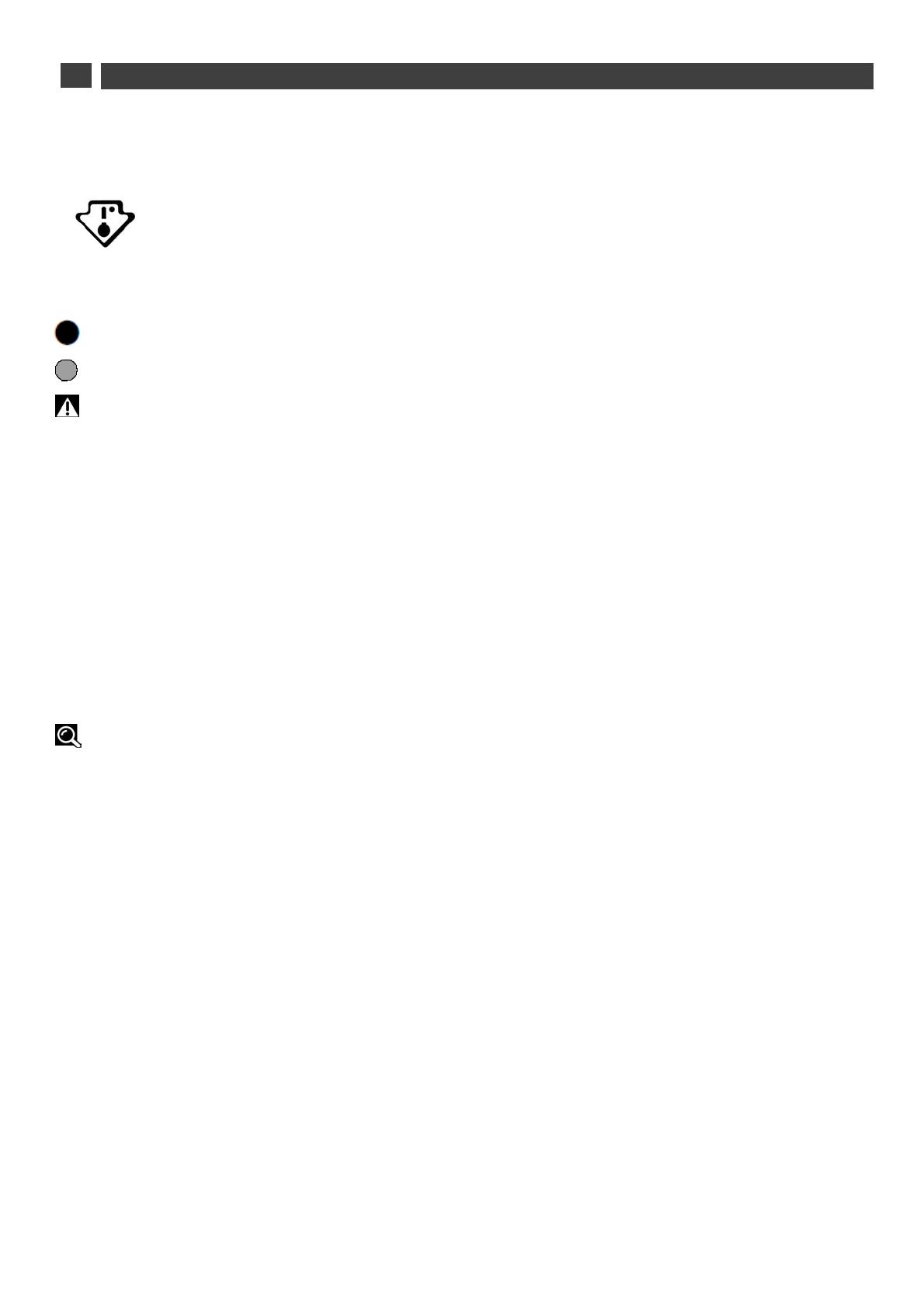
FR
4 USING YOUR FRIDGE
.
"COLD ZONE" SIGN
The sign opposite can be found in your fridge. It clearly shows the
coldest zone of your appliance, where the
temperature is lower than or equal to
+4°C.
A temperature gauge in this zone allows you to check the
settings of your fridge.
TEMPERATURE GAUGE (depending on the model)
Adjust the thermostat
OK
Temperature correct
Caution:
If the door of the fridge is left open for too long, the
temperature inside the fridge will rise. Check the temperature
gauge within 30 seconds after opening the door to make sure
that the reading is correct.
Adjusting the temperature
• Set the thermostat to the middle position when starting up your
appliance.
• 4 after starting up your appliance or after
changing the setting of the thermostat, check the temperature
gauge
• If the gauge stays black, gradually lower the temperature by
selecting a higher figure around the thermostat, then check the
temperature gauge again after 4 hours. Repeat the operation as
many times as is necessary.
• If the gauge turns green and "OK" is visible, then the
temperature of your fridge isb set properly.
Tip:
the temperature inside the fridge depends highly on the ambient
temperature, how often the door is opened and the quantity and
temperature of the food that you put inside the fridge. Therefore,
you must regularly check the temperature gauge and adjust the
setting of the thermostat as shown below, if necessary.
PREPARING THE FOOD
Pack fresh food properly. In this way, it will remain tasty, moist
and fresh. This also prevents the taste of one food from being
transmitted to another. Only vegetables, fruit and salad can be
kept in the vegetable bin. Allow hot food and drink to cool down
outside the fridge. Remove the cardboard packaging from
yoghurt pots. Check the best-by dates of the produce that you
buy. Do not exceed the best-by date.
STORING FOOD
The temperature is not uniform inside the fridge. Some parts are
colder than others. You must store different foodstuffs in the
most appropriate part of the fridge, to make sure that it is
properly preserved in complete safety.
Leave enough space around the food for air to circulate freely
and to prevent any contamination between the different
foodstuffs. Do not leave any packaging or food in contact with
the sides of the appliance. This is a particularly cold and humid
part of the appliance, where drops of water and ice condensate
during the normal operation of your fridge.
The coldest zone, shown by the "OK" logo, should be used to
store delicate, sensitive and perishable food, such as meat,
poultry, fish, cooked meats, ready-to-eat meals, mixed salads,
egg- or cream-based preparations and cakes, fresh pasta,
pastry, pizzas and quiches, fresh produce and cheeses made
with unpasteurised milk, ready-to-use vegetables sold in plastic
bags and, more generally, fresh produce with a best-by date that
stipulates a storage temperature of +4°C or less.
AUTOMATIC DEFROST
The defrost function of the fridge part of the appliance is fully
automatic. The water flows into a collector on the motor.
The heat released by the motor allows the content of the
collector to evaporate. It is quite normal that drops of water or
ice may appear on the wall at the back of the fridge. This is a
particularly cold and humid part of the appliance, where drops of
water and ice may form while the fridge is functioning quite
normally. The ice is eliminated by the fridge's automatic defrost
function.




















